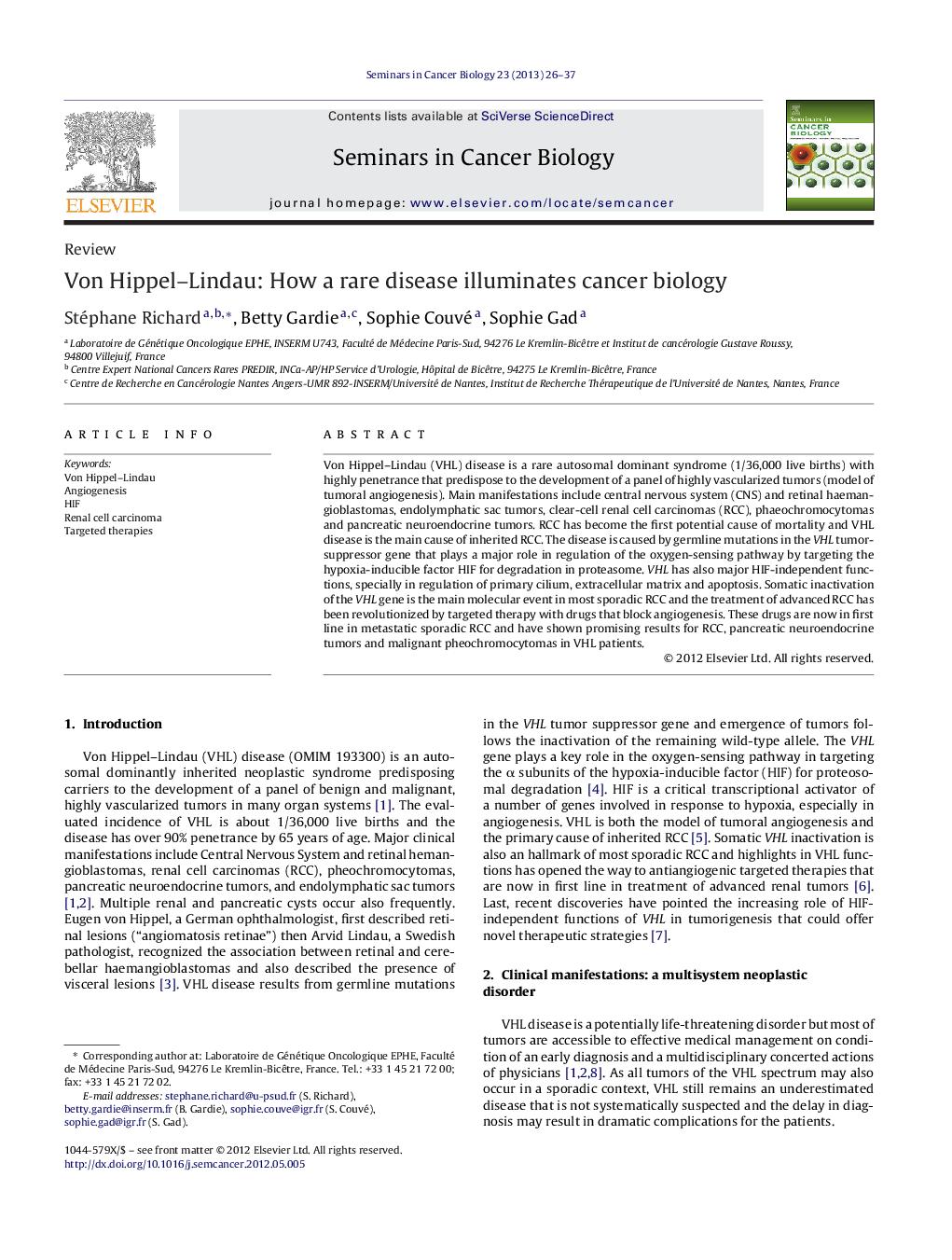| Article ID | Journal | Published Year | Pages | File Type |
|---|---|---|---|---|
| 2023741 | Seminars in Cancer Biology | 2013 | 12 Pages |
Von Hippel–Lindau (VHL) disease is a rare autosomal dominant syndrome (1/36,000 live births) with highly penetrance that predispose to the development of a panel of highly vascularized tumors (model of tumoral angiogenesis). Main manifestations include central nervous system (CNS) and retinal haemangioblastomas, endolymphatic sac tumors, clear-cell renal cell carcinomas (RCC), phaeochromocytomas and pancreatic neuroendocrine tumors. RCC has become the first potential cause of mortality and VHL disease is the main cause of inherited RCC. The disease is caused by germline mutations in the VHL tumor-suppressor gene that plays a major role in regulation of the oxygen-sensing pathway by targeting the hypoxia-inducible factor HIF for degradation in proteasome. VHL has also major HIF-independent functions, specially in regulation of primary cilium, extracellular matrix and apoptosis. Somatic inactivation of the VHL gene is the main molecular event in most sporadic RCC and the treatment of advanced RCC has been revolutionized by targeted therapy with drugs that block angiogenesis. These drugs are now in first line in metastatic sporadic RCC and have shown promising results for RCC, pancreatic neuroendocrine tumors and malignant pheochromocytomas in VHL patients.
